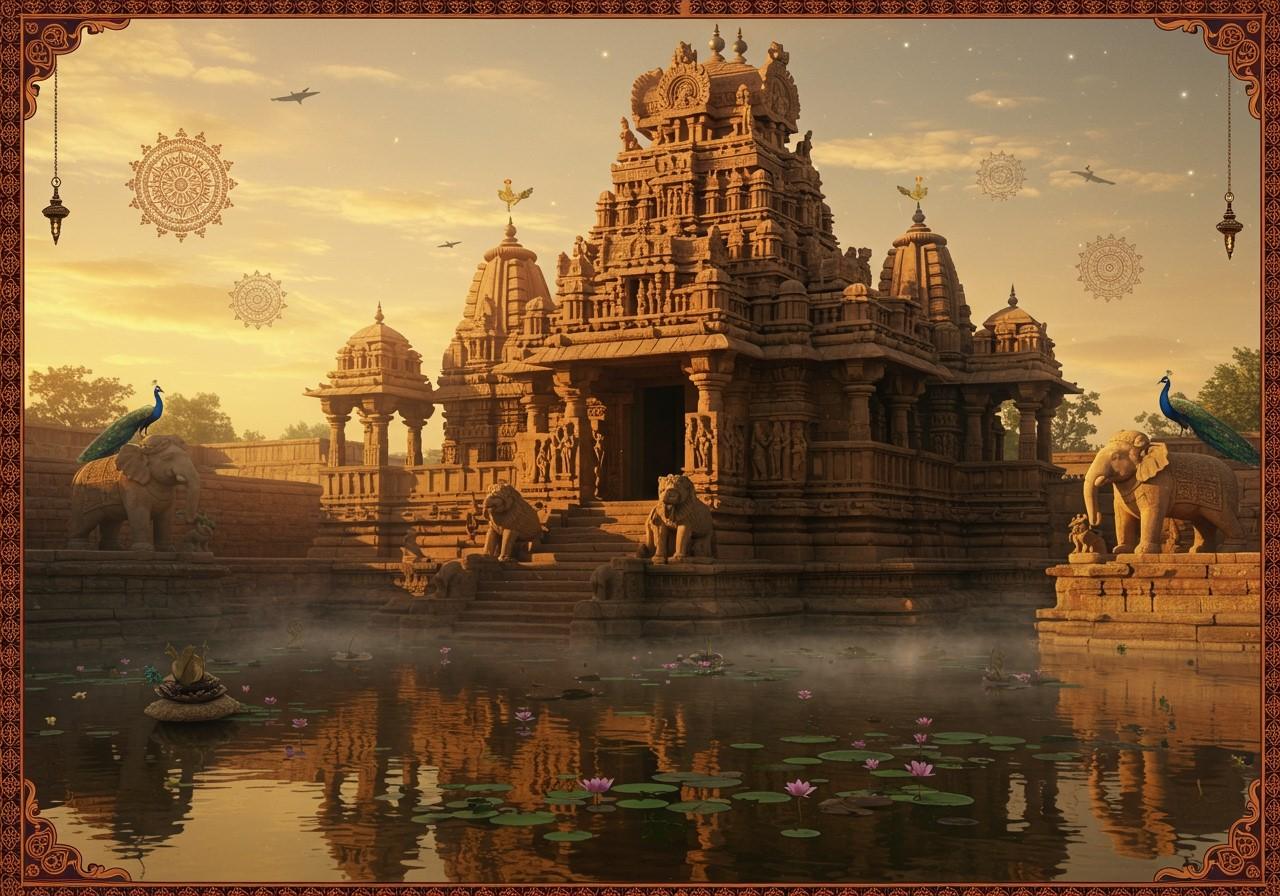
Journey through the historical village of Lakkundi, Karnataka, and witness the architectural grandeur of its ancient temples and intricate stone carvings. This 2025 guide invites cultural enthusiasts to delve into Lakkundi’s rich artistry, appreciating its significance as a hub of stone craft and traditional heritage.
A Look Back at Lakkundi’s History
Lakkundi, once a bustling city known as ‘Lokkigundi,’ held significant economic and commercial importance within the Chalukyas of Kalyana empire before the 14th century. It even served as a mint operation center for South India. By the 12th century, it housed numerous Hindu and Jain temples, establishing it as a prominent cultural center. Inscriptions discovered in Lakkundi offer valuable glimpses into the socio-political dynamics of that era.
Architectural Gems of Lakkundi
The temples of Lakkundi are renowned for their intricate designs and exceptional craftsmanship. The Kasivisvesvara temple, an 11th-century marvel, features a unique double shrine dedicated to Shiva and Surya, the sun god. Another notable structure is the Nannesvara Temple, a prime example of Kalyana Chalukya architecture, showcasing a harmonious blend of North and South Indian styles. The stepped wells, known as ‘Kalyani,’ are a distinctive feature of Lakkundi’s temple architecture. The ornate carvings, sculpted pillars, and use of soapstone in construction further highlight the region’s rich stone craft tradition.
Art and Craft in Lakkundi
Lakkundi’s artistic legacy is deeply rooted in its exceptional stone craft. Skilled artisans have created elaborate stone sculptures that adorn the temples, showcasing intricate details and unique iconography depicting various deities and mythological stories. The influence of Jainism and Hinduism is evident in the artistic expressions found here. The perforated stone windows, known as ‘Jali,’ are another remarkable feature of the temple architecture. Ongoing preservation efforts and vibrant festivals ensure that Lakkundi’s artistic heritage continues to thrive.
Lakkundi’s Place in Karnataka’s Cultural Heritage
Lakkundi plays a vital role in shaping Karnataka’s cultural heritage through its architectural and artistic contributions. Its influence extends to contemporary art and architecture in the state. Recognized as a significant cultural tourism destination, Lakkundi offers visitors a profound understanding and appreciation of Karnataka’s rich history. Within the broader cultural context of India, Lakkundi holds a special place due to its significant religious history.
Planning Your Visit to Lakkundi
For a culturally enriching experience, plan your visit to Lakkundi during the temple festivals. Lakkundi is easily accessible by road or rail from Gadag. Comfortable accommodations are available nearby. Consider taking a guided tour led by local experts who can provide valuable insights into the history and architecture of the temples. Engage respectfully with local customs to enhance your visit.
How Poojn.in Enhances Your Temple Visit
Poojn.in offers a wide selection of puja items tailored for temple visits and traditional worship at Lakkundi’s ancient temples.
- For Temple Visits: We provide pure cotton vastras and dhotis suitable for temple dress codes, traditional copper and brass pooja items for offerings, pure ghee cotton wicks for deepas, natural camphor and sambrani for rituals, and fresh coconuts and beetle leaves for prasadam. Our collection is specifically curated for temples like the Kasivisvesvara Temple and other Chalukyan temples in Lakkundi. Explore our Temple Visit Collection.
- For Home Worship: Honor the deities of Lakkundi’s temples in your home with our selection of brass and panchaloha idols of Shiva, Vishnu, and other deities. We also offer complete puja thalis, pure copper kalashas, traditional bell metal deepa stands, and authentic kumkum and chandanam. Browse our Home Worship essentials.
We offer high-quality, authentic items with secure shipping across India. Visit poojn.in today!
Conclusion
As you depart from Lakkundi, carry with you the cherished memories of its magnificent temples and intricate stone carvings. This village is more than just a destination; it’s a journey through time, reflecting the splendor of Karnataka’s architectural heritage. By visiting Lakkundi, you honor the artisans and their timeless craft, gaining a deeper understanding of India’s vibrant history.
FAQs: Exploring Lakkundi’s Architectural Heritage
Who were the primary builders of Lakkundi’s temples? The Chalukyas of Kalyani, renowned patrons of art and architecture, primarily built the temples during the 11th and 12th centuries.
What distinguishes Lakkundi’s architectural heritage? Lakkundi’s temples are celebrated for their intricate carvings and the unique fusion of Dravidian and Nagara architectural styles, creating a historical and artistic treasure.
How many temples grace Lakkundi? Lakkundi boasts over 50 temples, each possessing unique characteristics and designs, with the Kashi Vishwanatha Temple being the most prominent.
What characterizes Lakkundi’s artistic style? Lakkundi’s art is distinguished by detailed stone carvings and sculptures, reflecting the skilled craftsmanship of the artisans.
Why is Lakkundi referred to as the cradle of stone craft? Lakkundi earned this title due to its historical significance as a center for exquisite stonework, where artisans were renowned for their intricate carving skills.
Is Lakkundi’s temples open to tourists? Yes, tourists are welcome to explore these architectural marvels, making Lakkundi a popular destination for history enthusiasts and admirers of ancient architecture.
When is the ideal time to visit Lakkundi? The pleasant weather between October and March offers the best conditions for exploring Lakkundi’s architectural heritage.
Does Lakkundi host any festivals? Yes, Lakkundi celebrates several traditional festivals, providing opportunities to experience the local culture and witness rituals performed in the ancient temples.


